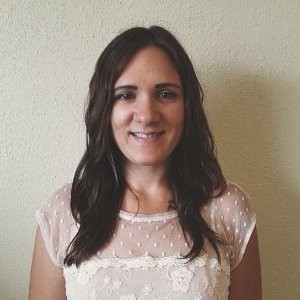Top-Level Takeaways
-
- Superior Choice Credit Union sponsors an annual challenge to help participants reduce their debt load.
- The year-long challenge is open to SCCU members and non-members.
- The 2017 participants paid down more than $81,000 of debt, an average of nearly $3,400 per participant.
Many credit unions have played with the concept of gamifying debt reduction and savings enhancement. One of the more notable is prize-linked savings. There’s the national initiative, Save to Win; the statewide WINcentive Savings program from the Minnesota Credit Union Network; and individual programs that institutions have launched internally, Neighborhood Credit Union’s Prize Savings Account, for example.
There are group competitions that offer a grand prize to winners at the end such as Wright-Patt Credit Union’s Savings Race and individual challenges such as Purdue Federal Credit Union’s 52 Week Savings Challenge wherein the ultimate reward is the cash saved at the end.
And there are several notable programs that encourage members to swap debt held elsewhere for a credit union loan with a lower rate. Fast Lane Financing at Educators Credit Union, Switch to Save at Patelco Credit Union, and Simplify & Save at Seven Seventeen Credit Union, just to name three.
For the past several years, Superior Choice Credit Union ($413.7M, Superior, WI) has helped its members reduce debt through the cooperative’s Great Debt Pay Down challenge. According to Brittany Berrens Markgren, marketing manager at the Wisconsin credit union, the year-long challenge is not a quick fix or just a contest to win money. The challenge is designed to help members change their relationship with money.
Like any gamified program worth its weight, there are winners. In this case, prize money goes directly toward the winners’ debts. The credit union pays out directly to the creditors or to the debt payment plan participants set up as part of the challenge’s financial counseling.
Here, Berrens Markgren discusses the success of the Great Debt Pay Down challenge and key lessons learned for future initiatives.

What is the Great Debt Pay Down challenge?
Brittany Berrens Markgren: It’s something we’ve done for several years now in partnership with LSS Financial Counseling, which provides one-on-one financial counseling sessions and educational workshops for our members. The Great Debt Paydown program requires participants to attend quarterly private counseling sessions, attend at least four group workshops throughout the year, and most importantly pay down debt for a chance to win one of four prizes.
There’s a $3,000 grand prize for the participant who makes the greatest percentage reduction in their debt-to-income ratio; $1,500 and $500 prizes for the second and third place winners; and a $1,000 award for a SCCU employee participant. Award money goes to further pay down participants debt.
How does SCCU recruit participants?
BBM: We primarily use our regular membership communication channel, such as email newsletters, branch flyers, one-on-one conversations, our website, and social media. We also send a press release to members and non-members within the credit union’s service area announcing the program is open.
We had 27 participants in our 2017 challenge, which is the most we’ve ever had.

You allow employees to participate. Has that always been the case?
BBM: Yes. The challenge has always had a special employee category that encourages them to get involved without taking away from the general membership challenge. Employees who participate attended the same group learning sessions and commit to their own quarterly counseling requirements.
Most of our employees are also members, so they should be able to take advantage of the same services. Whenever we have a special event or educational session, they are invited to participate. Doing so not only helps them personally but also enables them to better assist the members they interact with every day.
Talk about the results of the 2017 program.
BBM: Overall, the 2017 participants paid down more than $81,000 of debt that’s an average of nearly $3,400 per participant. The average reduction in debt-to-income ratio was 6.21% per participant.
However, the debt-to-income ratio reduction among the winners is more dramatic. The grand prize winner reduced his by a whopping 30.56% in just one year.
Will the credit union sponsor a 2018 paydown challenge?
BBM: No. We are working with our financial counseling partner to rollout a new program that is more focused on individual goals. The Great Debt Pay Down participants achieved impressive results, but the challenge was totally focused on lowering their debt-to-income ratio.
One of our key takeaways from last year’s program was that our members have other financial goals beyond paying down debt. We want to take a more holistic approach this year, so members have the tools they need to achieve their individual goals whether that is saving for retirement, buying a first home, paying down debt, or something else.
What other lessons did SCCU learn?
BBM: The program was great, but the planning and coordination of events was time consuming. For example, we held financial workshops every month to ensure participants could fit the required four into their schedules. This year, we’re taking a breather. I have more time to plan broader events for the members because I’m not planning these monthly events.
I also recommend working with a strong partner who can help the credit union conduct one-on-one counseling sessions and track the debt-to-income ratios, etc.
LSS Financial Counseling has been critical to both the Great Debt Pay Down and the new educational sessions we’re developing for our members. Tonight, we’re hosting an educational session on student loans for parents and high school students to help them understand the college financing process. It’s nice to switch things up this year and offer different types of resources.
This interview has been edited and condensed.